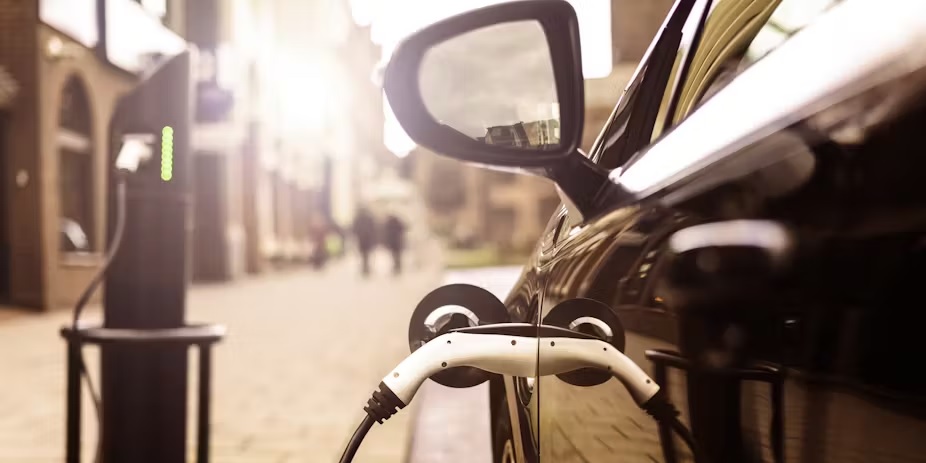How electric fleet vehicles fit into your future municipality strategy

Electric vehicles (EVs) are becoming more practical for public fleets due to having longer ranges and improved capabilities. As battery technology continues to advance, EVs are becoming more affordable and capable of meeting the needs of municipal fleets.
Since the public mandates for fleet managers to adopt EVs are approaching rapidly, let’s explore the current state of the industry, how electric fleet vehicles fit into your municipality's strategy, and the reasons that fleet managers should start planning now to transition their vehicles to electric models.
The benefits of electric fleet vehicles
More affordable
Battery production costs have fallen considerably—down 14% in 2023—resulting in lower prices for EVs. This has resulted in a lower average cost for electric fleet vehicles of about 18% yearly. With auto sales expected to slow in 2024, prices are expected to fall even further.
Available incentives
While upfront costs remain high for EVs compared to gas-powered models, several financial incentives are available to help reduce costs, including various levels of funding from:
- The federal government
- State and local governments
- Utility companies
- Automakers
With the savings from available incentives factored in, the total cost of ownership (TCO) for EVs is actually lower than that of comparable internal combustion engine vehicles. However, certain incentives have expiration dates, such as the California Clean Vehicle Rebate, which ended in November 2023.
When incentives expire, the TCO for electric fleet vehicles rises. There are also concerns about whether enough funding will be available as we get closer to the mandated deadlines for EV adoption. Waiting may cause backlogs, and fleet managers might miss out on significant savings. Therefore, there's a bit of urgency to transition to EVs soon to maximize procurement dollars before incentives disappear.
Improved range
Besides affordability, range anxiety has been a top concern limiting EV adoption. However, ranges have improved significantly in recent years. Since 2018, they’ve increased about 10% annually.
Next-generation batteries coming to market in the next few years are also expected to deliver ranges exceeding 500 miles on a single charge, while Toyota claims that its solid-state battery technology will enable ranges over 900 miles.
With this range level, EV fleet drivers will have more confidence to complete their daily tasks without worrying about running out of power. Fleet routing and optimization software can also help ease concerns and optimize daily miles.
Navigating the transition to electric fleet vehicles
While mandates vary by location, most federal vehicle purchases are required to be zero-emission vehicles (ZEVs) by 2035. More than a dozen states have signed on to California’s ZEV and low-emission vehicle standards to accelerate the production and deployment of EVs, and many communities have enacted their own legislation requiring EV procurement.
Besides requirements for public fleet procurement, government entities are tasked with leading by example, setting the tone for broader public adoption. Planning needs to be well underway to comply.
Public fleet managers have an opportunity to get ahead of the market. Here are key steps to integrate EVs into future fleet procurement and infrastructure strategies:
- Assess current vehicles to identify the most accessible candidates for replacement by EVs based on typical daily mileage and access to charging. Start with vehicles that drive predictable short distances to help ease driver concerns.
- Begin planning for charging infrastructure based on typical routes and parking locations. Calculate electrical capacity and costs for installs. Explore creative partnerships and financing options to reduce infrastructure costs.
- Examine financing options like leases and bulk purchase agreements that can reduce upfront costs. Partnerships with utilities may provide additional savings on charging infrastructure.
- Pilot a small number of EVs first to establish processes, charging patterns, and workflow before scaling up. Learn from early adoption experiences to improve results.
- Phase in the transition as more affordable and capable models come to market.
Fleet managers should also plan training for drivers and maintenance teams now. Maintaining electric fleet vehicles entails different aspects, so reskilling may be necessary, along with costs for replacement parts.
The future is electric
The market is reaching an inflection point where EVs are now considered affordable options. Costs are coming down, longer ranges are becoming available, and incentives are available.
Now is the time for public fleet managers to lay the groundwork for transitioning to EVs to meet compliance mandates. Earlier planning and phased integration will enable municipalities to maximize savings and optimize infrastructure for charging growing electric fleets over the next decade.
Sourcewell can help with its cooperative agreements. Combining the bulk purchasing power of 50,000 government entities and educational institutions creates tangible results that lower costs and accelerate purchasing. Competitively solicited cooperative agreements enable public fleet managers and procurement teams to select from a wide range of available contracts for EVs, charging infrastructure, telematics, accessories, and consulting.
Switching to EVs can feel overwhelming, but you don't have to do it alone. See how cooperative purchasing can ease the transition, expedite procurement, and help you save time and money with easy-to-access solutions.


